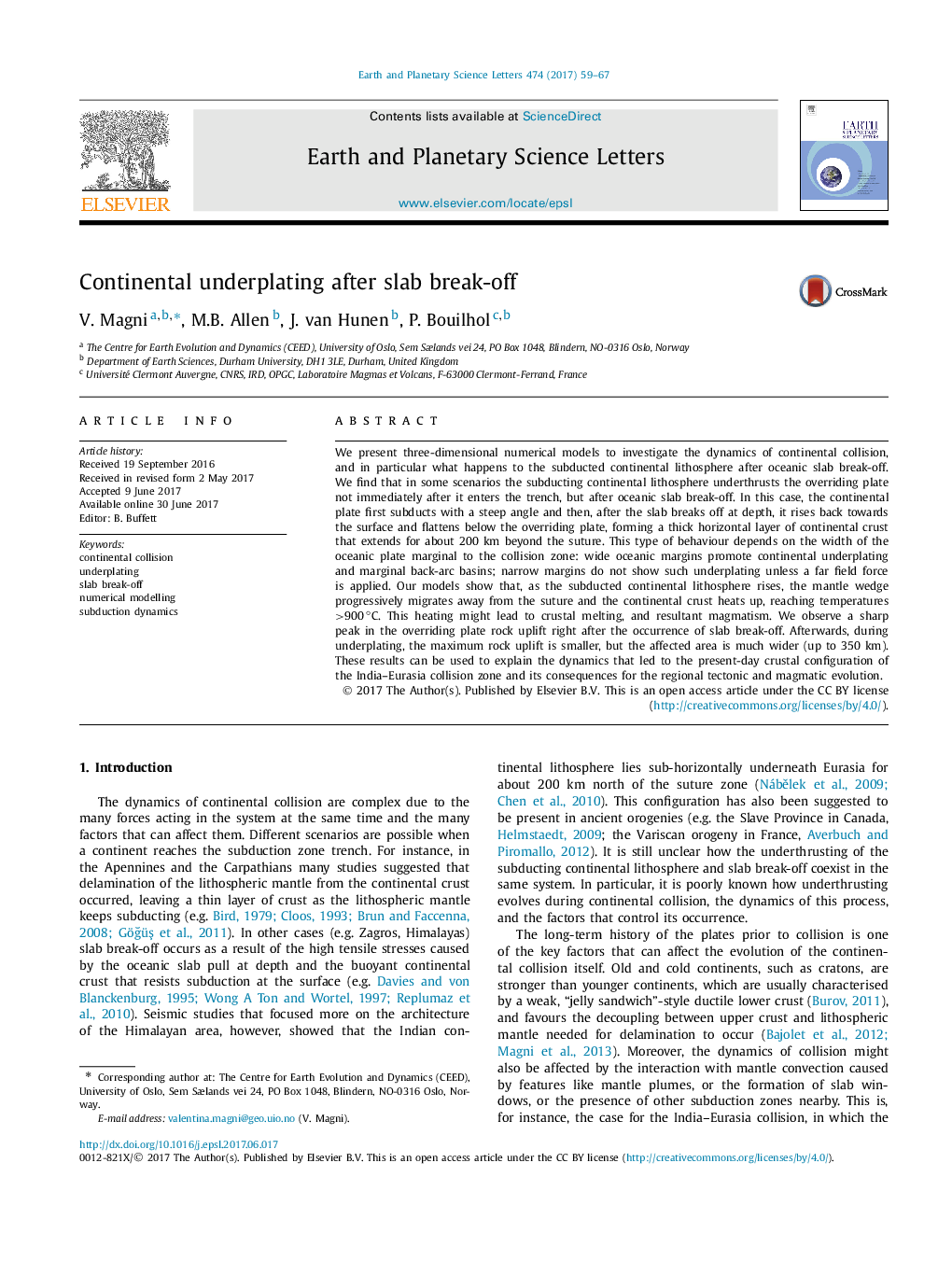| Article ID | Journal | Published Year | Pages | File Type |
|---|---|---|---|---|
| 5779719 | Earth and Planetary Science Letters | 2017 | 9 Pages |
â¢We use 3D models to study the dynamics of continental collision and underplating.â¢The subducted continental slab can underthrust the overriding plate after break-off.â¢We investigate what controls the occurrence of underplating after slab break-off.â¢We study the consequences of underplating on magmatism and surface deformation.â¢Our models can be used to better constrain key features of India-Eurasia collision.
We present three-dimensional numerical models to investigate the dynamics of continental collision, and in particular what happens to the subducted continental lithosphere after oceanic slab break-off. We find that in some scenarios the subducting continental lithosphere underthrusts the overriding plate not immediately after it enters the trench, but after oceanic slab break-off. In this case, the continental plate first subducts with a steep angle and then, after the slab breaks off at depth, it rises back towards the surface and flattens below the overriding plate, forming a thick horizontal layer of continental crust that extends for about 200 km beyond the suture. This type of behaviour depends on the width of the oceanic plate marginal to the collision zone: wide oceanic margins promote continental underplating and marginal back-arc basins; narrow margins do not show such underplating unless a far field force is applied. Our models show that, as the subducted continental lithosphere rises, the mantle wedge progressively migrates away from the suture and the continental crust heats up, reaching temperatures >900â°C. This heating might lead to crustal melting, and resultant magmatism. We observe a sharp peak in the overriding plate rock uplift right after the occurrence of slab break-off. Afterwards, during underplating, the maximum rock uplift is smaller, but the affected area is much wider (up to 350 km). These results can be used to explain the dynamics that led to the present-day crustal configuration of the India-Eurasia collision zone and its consequences for the regional tectonic and magmatic evolution.
